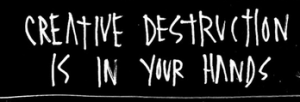When you have some sun on your back after a long period of those winter months, you just always begin to feel life is so much better going forward.
Life seems to reawaken within. I often wish we could capture the ‘sense’ of spring and what it promises to bring from this change of season. Those of us who witness the change of seasons are so lucky.
I’ve also been reminded recently about the phrase offered by a number of leaders to explain a positive encouraging shift after a tough time, it goes like this: “we do see some green shoots that are offering some early signs of growth and recovery.”
Spring captures that growth moment. It is often talking to us of renewal. Innovation needs that capturing opportunity as well.
Freezing the moment to listen Continue reading “A No Better Moment”

